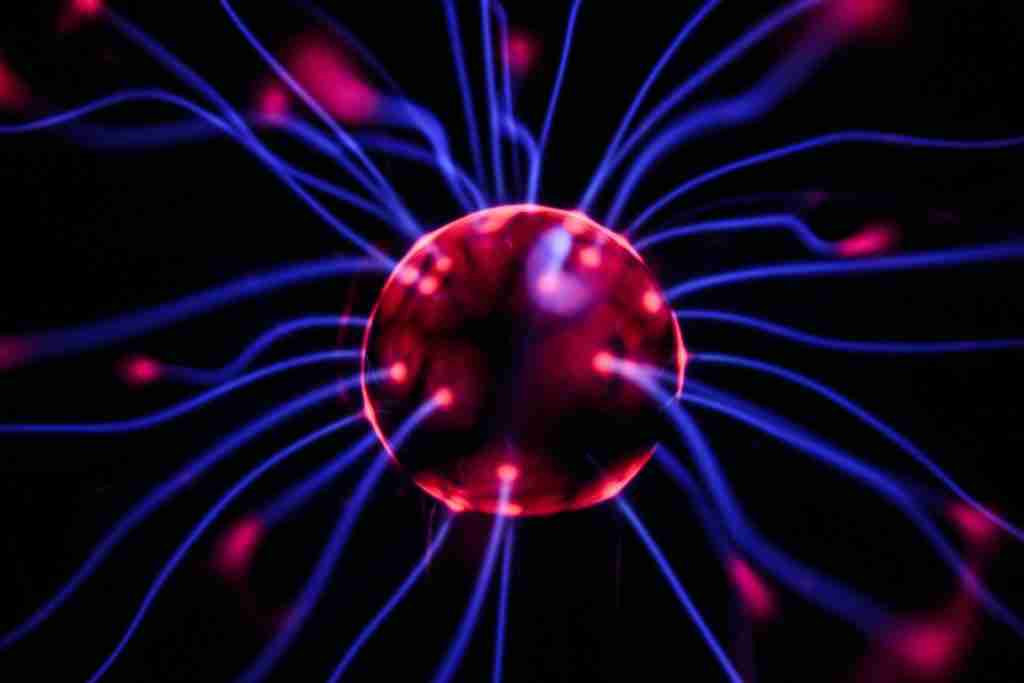26 Fun Facts About Schizophrenia | Nature vs Nurture
1. Schizophrenia often intensifies dream vividness and recall.
This increased dream intensity can blur the line between dreams and reality for those with schizophrenia, leading to confusion and distress.
It highlights the unique interaction between schizophrenia and sleep patterns. Understanding this aspect can be crucial for therapeutic approaches.
2. Some individuals with schizophrenia have unique genetic mosaicism in their brain cells.
This genetic diversity within brain cells may contribute to the variability and complexity of symptoms in schizophrenia.
It’s a significant area of research, shedding light on the genetic factors of the disorder. These findings could pave the way for personalized treatment strategies.
3. Schizophrenia typically isn’t diagnosed until late adolescence or early adulthood.
The late onset of diagnosis often complicates treatment and management, as early years are crucial for development. This delay can lead to challenges in education and social integration.
Early detection and intervention are key areas of focus to improve outcomes.
4. Individuals with schizophrenia often experience severe sleep disturbances.

Disrupted sleep patterns can exacerbate other symptoms of schizophrenia and affect overall well-being. Addressing sleep issues is an important component of comprehensive treatment plans.
Research into the relationship between schizophrenia and sleep can provide insights into more effective interventions.
5. Recent studies suggest a link between neuroinflammation and schizophrenia.
This potential link opens new avenues for understanding the pathophysiology of schizophrenia and developing treatments. Neuroinflammation may play a role in the onset and progression of the disorder.
These findings highlight the importance of a holistic approach to understanding and treating schizophrenia.
6. Schizophrenia is associated with distinctive patterns of brain folding.
The unique brain folding patterns may relate to the cognitive and perceptual symptoms of schizophrenia. Investigating these patterns can offer insights into the neurological basis of the disorder.
This research is important for understanding the structural changes in the brain associated with schizophrenia.
7. Schizophrenia has multiple subtypes, each with distinct symptoms.
The existence of various subtypes highlights the heterogeneity and complexity of the disorder. Recognizing and differentiating these subtypes is essential for tailored treatment approaches.
This variability underscores the need for personalized medicine in psychiatric care.
8. What is Schizophrenia?
Schizophrenia is a mental health disorder characterized by a range of symptoms, including distorted thoughts, perceptions, emotions, and behaviors.
It often involves a disconnect from reality, impacting an individual’s ability to think logically, manage emotions, and engage in daily life activities. Schizophrenia requires ongoing treatment and support for affected individuals.
9. Schizophrenia can affect eye movement control and tracking, which is one of fun facts about Schizophrenia.
Abnormal eye movements can be a subtle but significant symptom of schizophrenia. These differences in eye movement can be used as a potential diagnostic tool.
Research into eye movement patterns offers insights into the neurological impacts of the disorder.
10. A higher incidence of schizophrenia is noted among those born in late winter or early spring.
This seasonal birth effect suggests environmental factors, such as prenatal exposure to viruses, may influence the risk of developing schizophrenia.
Understanding this correlation is important for studying the etiology of the disorder. It highlights the interplay between environmental and genetic factors in schizophrenia.
11. Historical records suggest schizophrenia-like conditions existed in ancient civilizations.
These records provide evidence that schizophrenia or similar disorders have been part of the human experience for centuries.
Studying these historical accounts can offer insights into the evolution of mental health understanding. It emphasizes the longstanding nature of the challenges in diagnosing and treating schizophrenia.
12. The dopamine hypothesis is a key theory in understanding schizophrenia.

This hypothesis suggests that imbalances in dopamine levels play a crucial role in the symptoms of schizophrenia. It has been a foundation for many of the current treatments for the disorder.
Ongoing research continues to explore and refine this theory.
13. Cognitive reserve may influence the severity and progression of schizophrenia.
A higher cognitive reserve is thought to potentially mitigate some of the cognitive impacts of schizophrenia.
Understanding this relationship is important for developing cognitive and rehabilitative therapies. It underscores the importance of cognitive health in managing schizophrenia.
14. Growing up in an urban environment is linked to a higher risk of developing schizophrenia.
This link highlights the potential impact of environmental factors on mental health. Urban living may expose individuals to stressors that increase their risk of developing schizophrenia.
Understanding these environmental influences is crucial for prevention and public health strategies.
15. Some historical geniuses are believed to have had schizophrenia.
This belief suggests that schizophrenia can coexist with extraordinary intellectual or creative abilities. It challenges the notion of schizophrenia as solely a debilitating condition.
Studying these historical figures can provide a deeper understanding of the diverse manifestations of schizophrenia.
16. Schizophrenia has been depicted in many famous works of art throughout history.
These artistic representations reflect the profound impact of schizophrenia on human culture and thought. They range from realistic portrayals to symbolic and abstract interpretations.
These artworks provide a valuable perspective on how schizophrenia has been viewed and understood across different eras.
17. Childhood-onset schizophrenia is extremely rare and more severe.
The rarity and severity of early-onset schizophrenia pose significant challenges in diagnosis and treatment.
This form of schizophrenia requires specialized care and early intervention for better outcomes. Understanding its unique characteristics is important for pediatric mental health care.
18. Schizophrenia-like symptoms are depicted in prehistoric rock art.
These ancient depictions suggest that schizophrenia or similar conditions have been a part of human experience for millennia.
This historical perspective provides valuable insights into the understanding of mental health through the ages. Studying these artworks can offer a unique window into the early interpretations of mental health conditions.
19. Symptoms and perceptions of schizophrenia vary significantly across different cultures.
Cultural differences can influence how symptoms are expressed and perceived, as well as the approaches to treatment.
This highlights the need for culturally sensitive diagnostic tools and treatments. Understanding these variations is crucial for global mental health efforts.
20. Schizophrenia affects the activity of mirror neurons.

Impairment in these neurons can contribute to the social and emotional challenges faced by individuals with schizophrenia.
Understanding this impact is crucial for developing effective social skills training and therapies. Mirror neurons are a key area of research in understanding the neurobiological underpinnings of the disorder.
21. In ancient times, schizophrenia symptoms were often attributed to supernatural forces.
This historical perspective reflects the lack of understanding of mental health conditions in the past.
Such misinterpretations have evolved over time with advancements in medical science. This history underscores the importance of continuing education and awareness about mental health.
22. Schizophrenia can lead to increased sensitivity to light, sound, and touch.
Heightened sensory perception can be overwhelming and contribute to the discomfort experienced by individuals with schizophrenia.
Managing these sensitivities is crucial for improving quality of life. This increased sensitivity highlights the need for a tailored approach to sensory stimuli in treatment settings.
23. Many individuals with schizophrenia display heightened creativity.
This creativity often manifests in artistic, literary, or musical talents, challenging stereotypes of the disorder.
This aspect underscores the diverse experiences and abilities of those with schizophrenia. Encouraging creative expression can be a valuable aspect of therapy.
24. A small percentage of those with schizophrenia exhibit extraordinary savant abilities.

These abilities, such as exceptional memory or artistic skills, provide a stark contrast to the common cognitive difficulties associated with schizophrenia.
This phenomenon is a subject of ongoing research and fascination. It offers insights into the diverse potential of the human brain.
25. Schizophrenia typically isn’t diagnosed until late adolescence or early adulthood.
The late onset of diagnosis often complicates treatment and management, as early years are crucial for development.
This delay can lead to challenges in education and social integration. Early detection and intervention are key areas of focus to improve outcomes.
26. Some individuals with schizophrenia have unique genetic mosaicism in their brain cells.
This genetic diversity within brain cells may contribute to the variability and complexity of symptoms in schizophrenia.
It’s a significant area of research, shedding light on the genetic factors of the disorder. These findings could pave the way for personalized treatment strategies.
FAQs
Schizophrenics may display unconventional actions, like altered speech, social withdrawal, or hallucinations, stemming from the disorder’s impact on perception and cognition.
Common symptoms include hallucinations, delusions, disorganized thinking, social withdrawal, and impaired cognitive function, affecting daily life and functioning.
Antipsychotic medications, like risperidone or olanzapine, are often prescribed to manage symptoms and improve the quality of life for individuals with schizophrenia.
The exact cause is unknown, but a combination of genetic, environmental, and neurobiological factors contributes to the development of schizophrenia.
Treatment often involves a combination of antipsychotic medications, therapy, and support to manage symptoms and improve overall well-being.







